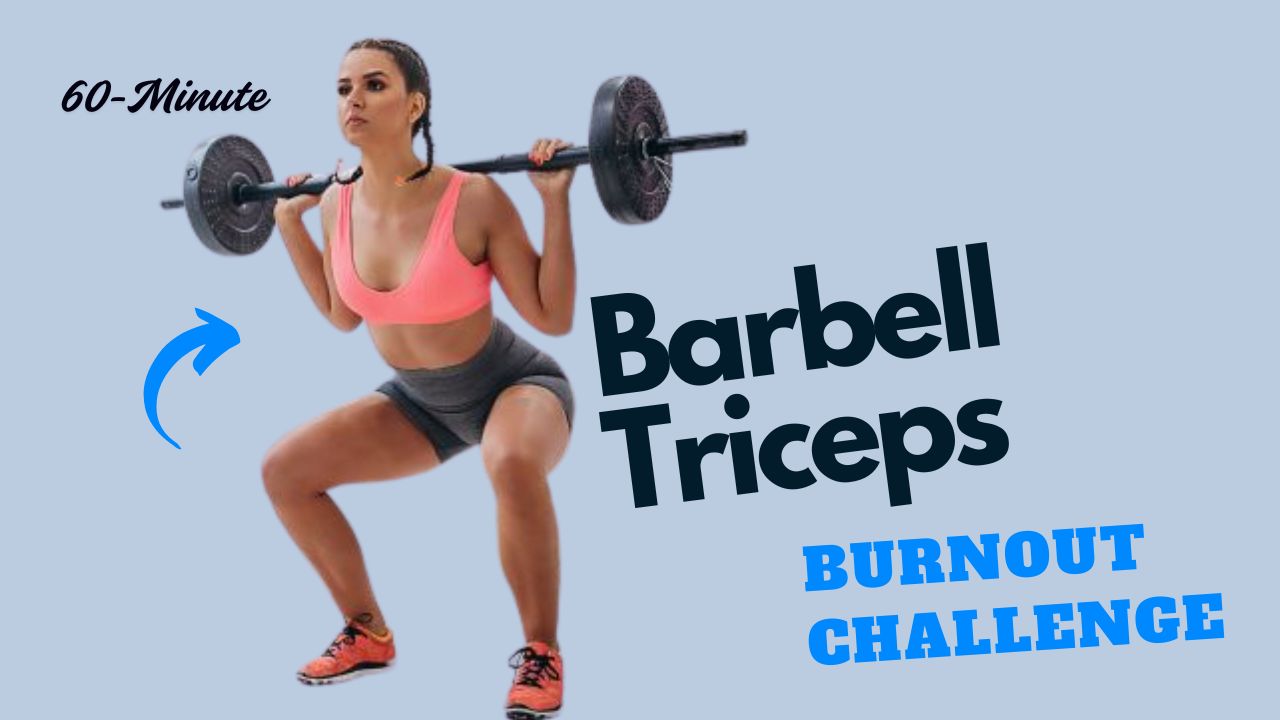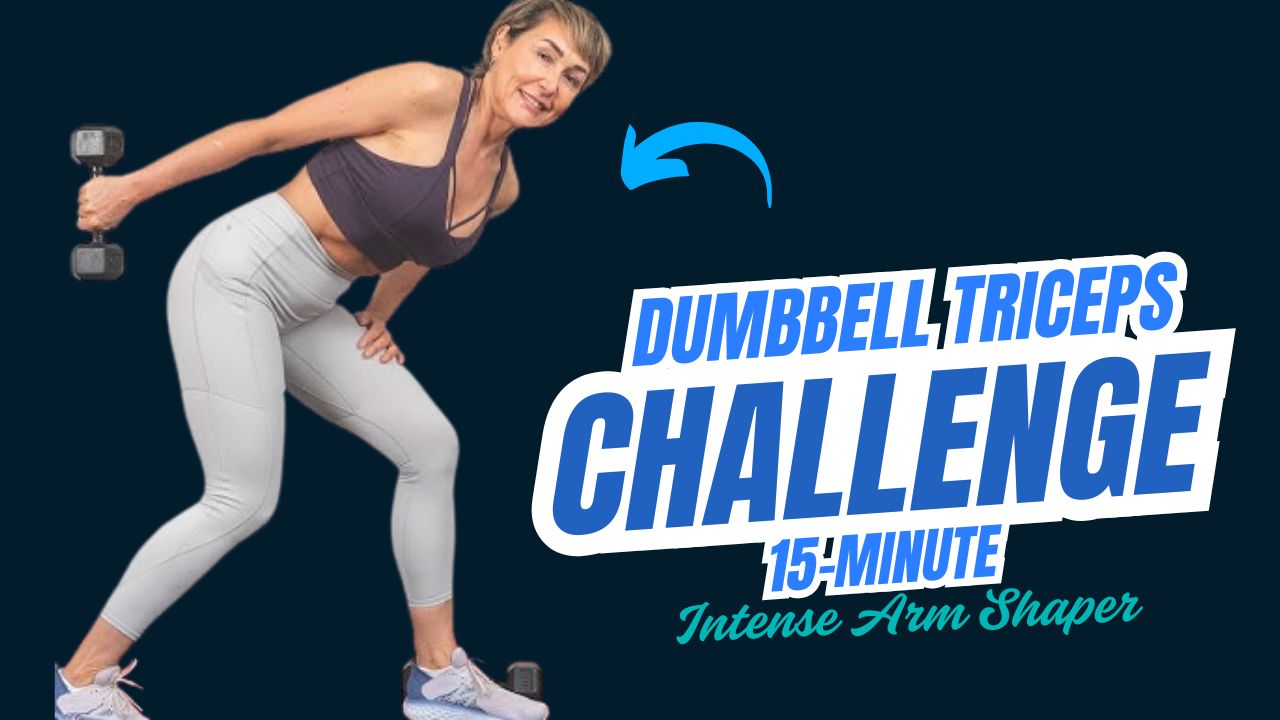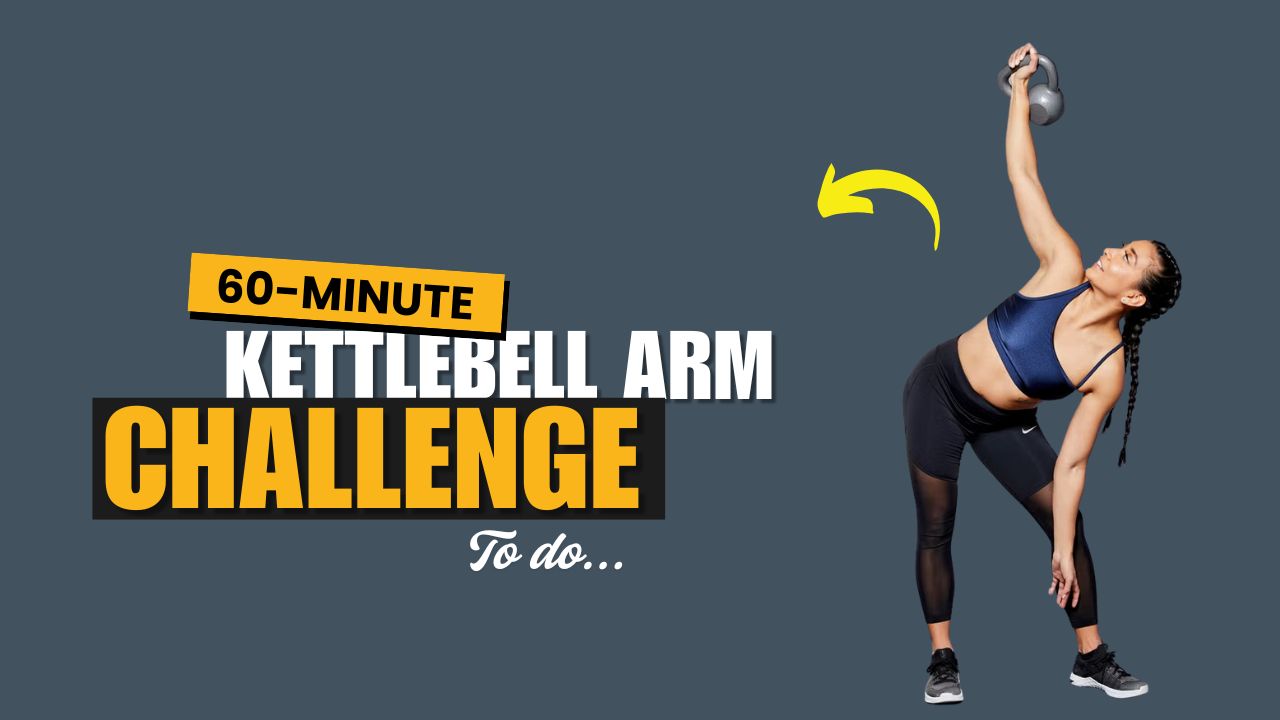Ready to turn ordinary tricep training into a game-changing challenge? The Bosu ball isn’t just for core workouts — it can revolutionize your arm days by adding an element of instability, forcing your triceps and supporting muscles to fire up harder than ever before.
Whether you’re chasing stronger arms, better coordination, or improved overall stability, these 7 Bosu ball tricep exercises will transform your routine.
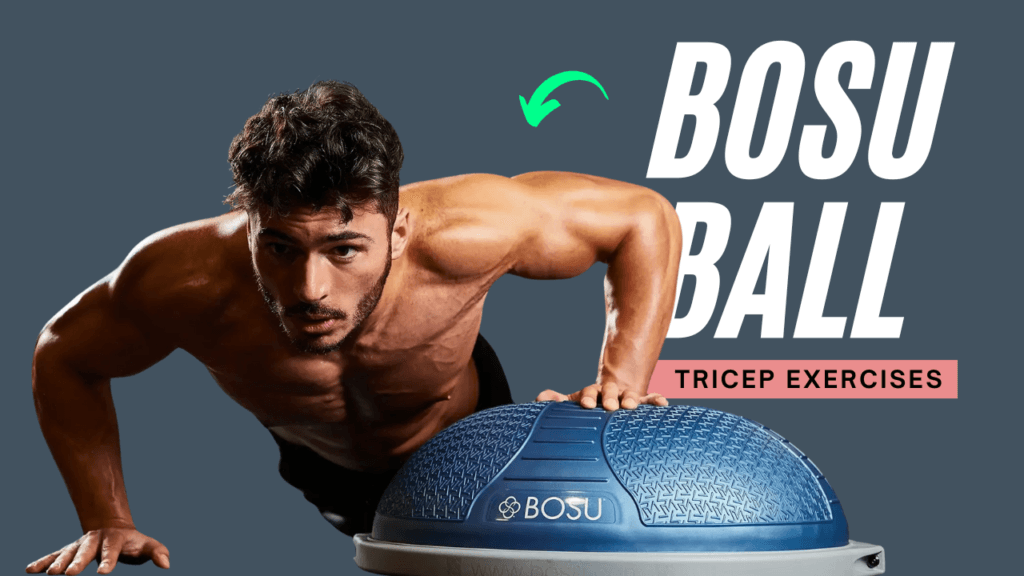
Table of Contents
What Can Happen After 30 Days of Bosu Ball Tricep Exercises
| Possible Positive Changes | Potential Risks if Done Incorrectly |
|---|---|
| Noticeably stronger and more defined triceps. | Wrist or shoulder strain from improper form. |
| Improved core stability and balance. | Increased risk of injury if progressing too quickly. |
| Better coordination and body control. | Muscle soreness from overtraining without rest. |
| Enhanced overall upper-body strength. | Joint discomfort if ignoring proper alignment. |
| Increased confidence in performing challenging moves. | Plateauing if you don’t vary your exercises. |
| Higher calorie burn during workouts due to instability. | Frustration or discouragement if not patient with balance improvements. |
Do & Don’t: Bosu Ball Tricep Exercises
| Do | Don’t |
|---|---|
| Start with light weights to master balance. | Jump into heavy weights before learning stability. |
| Keep your core tight to support your spine. | Let your hips sag or arch during push-ups or planks. |
| Use slow, controlled movements for each rep. | Rush through reps with poor form. |
| Perform exercises on a flat, non-slip surface. | Use the Bosu ball on uneven or slippery floors. |
| Align wrists, elbows, and shoulders properly. | Allow elbows to flare out excessively. |
| Rest 48 hours between intense tricep workouts. | Train the same muscle group daily without rest. |
| Modify exercises by dropping to knees if needed. | Sacrifice form just to complete reps. |
| Warm up your shoulders, arms, and wrists first. | Skip warm-up or stretching before starting. |
7 Best BOSU Ball Tricep Workouts To Do
1. Bosu Ball Tricep Push-Ups
How to do it:
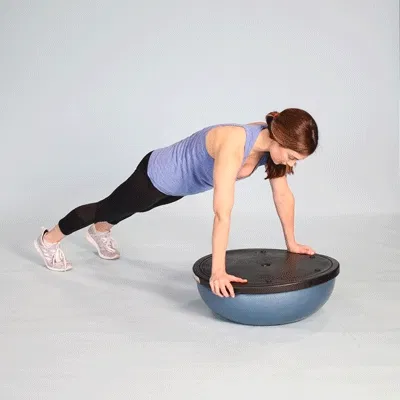
- Place the Bosu ball dome-side down.
- Grip the flat platform with both hands shoulder-width apart.
- Extend your legs into a plank position.
- Lower your chest toward the Bosu, keeping elbows tight by your sides.
- Push back up, squeezing your triceps at the top.
Why it works: The instability challenges your triceps and core simultaneously.
Did you know? Studies show instability training can activate up to 40% more muscle fibers in the upper body compared to stable surfaces.
2. Close-Grip Bosu Ball Push-Ups
How to do it:
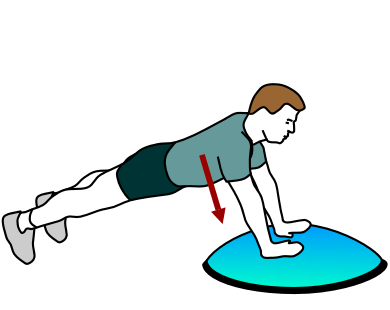
- Flip the Bosu dome-side up.
- Place both hands close together on top of the dome (forming a diamond shape if comfortable).
- From plank, lower your body, keeping elbows near your ribs.
- Press back up, focusing on your triceps contraction.
Why it works: The close grip isolates the triceps even more, while the Bosu forces your stabilizers to engage.
3. Bosu Ball Tricep Dips
How to do it:
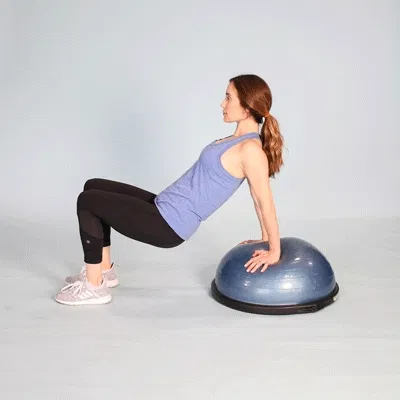
- Sit on the floor with your back facing the Bosu dome-side up.
- Place your hands on the dome, fingers facing forward.
- Lift your hips off the ground.
- Bend your elbows to lower your body, then press back up.
Why it works: Dips target all three tricep heads, and the Bosu adds an extra stability challenge.
4. Bosu Ball Overhead Tricep Extension
How to do it:
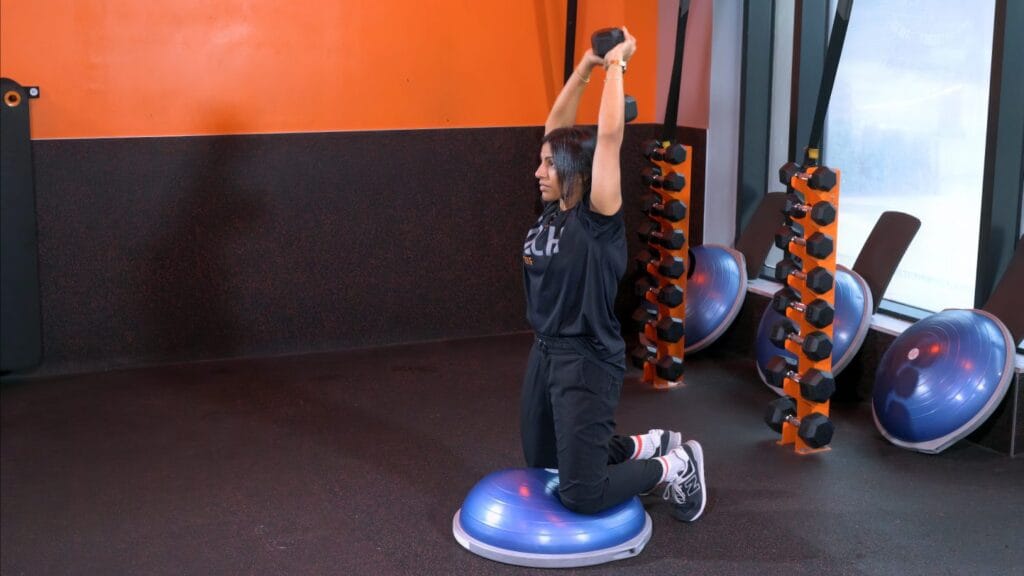
- Kneel or stand on the Bosu dome-side up.
- Hold a dumbbell or kettlebell with both hands overhead.
- Keeping your elbows close to your head, lower the weight behind your head.
- Extend your arms back up, fully contracting your triceps.
Why it works: The Bosu base challenges balance, intensifying muscle recruitment.
5. Bosu Ball Tricep Kickbacks
How to do it:

- Kneel on the Bosu dome with one knee and place the same-side hand on the dome.
- Hold a dumbbell in the opposite hand.
- Keeping your elbow at your side, extend your arm straight back.
- Return slowly to the starting position; complete reps, then switch sides.
Why it works: Combines tricep isolation with core stabilization.
6. Bosu Ball Plank to Tricep Extension
How to do it:
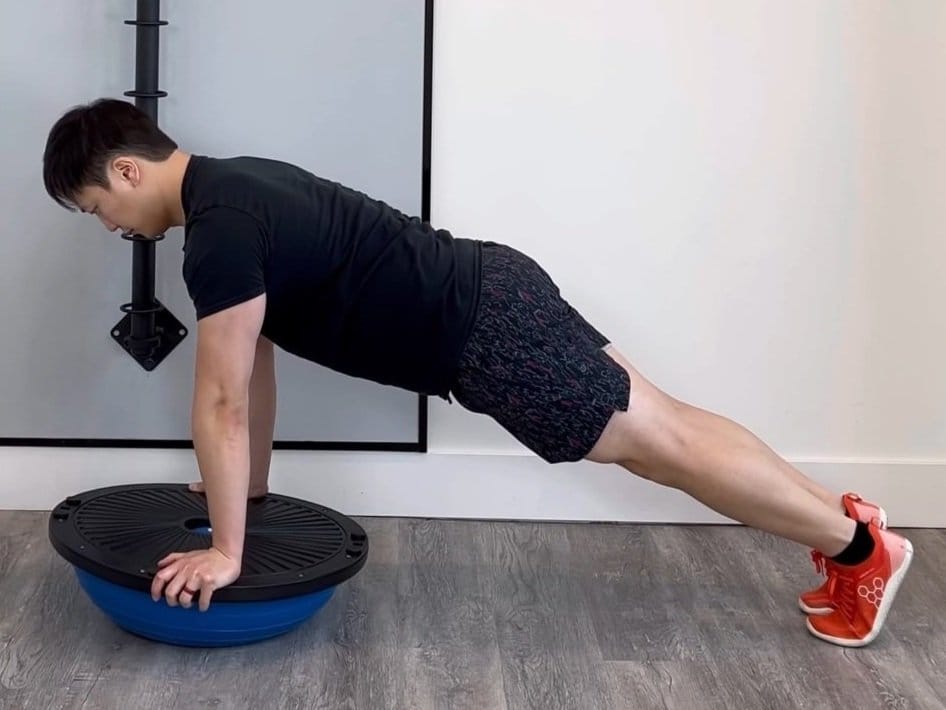
- Set the Bosu dome-side down and hold the flat side in a plank.
- Lower your forearms to the ground one at a time (forearm plank), then press back up to your hands.
- Repeat, alternating the leading arm.
Why it works: This dynamic movement strengthens the triceps, shoulders, and core endurance.
Interesting fact: This is similar to the “commando” plank but with added instability — increasing difficulty and calorie burn!
7. Bosu Ball Skull Crushers
How to do it:
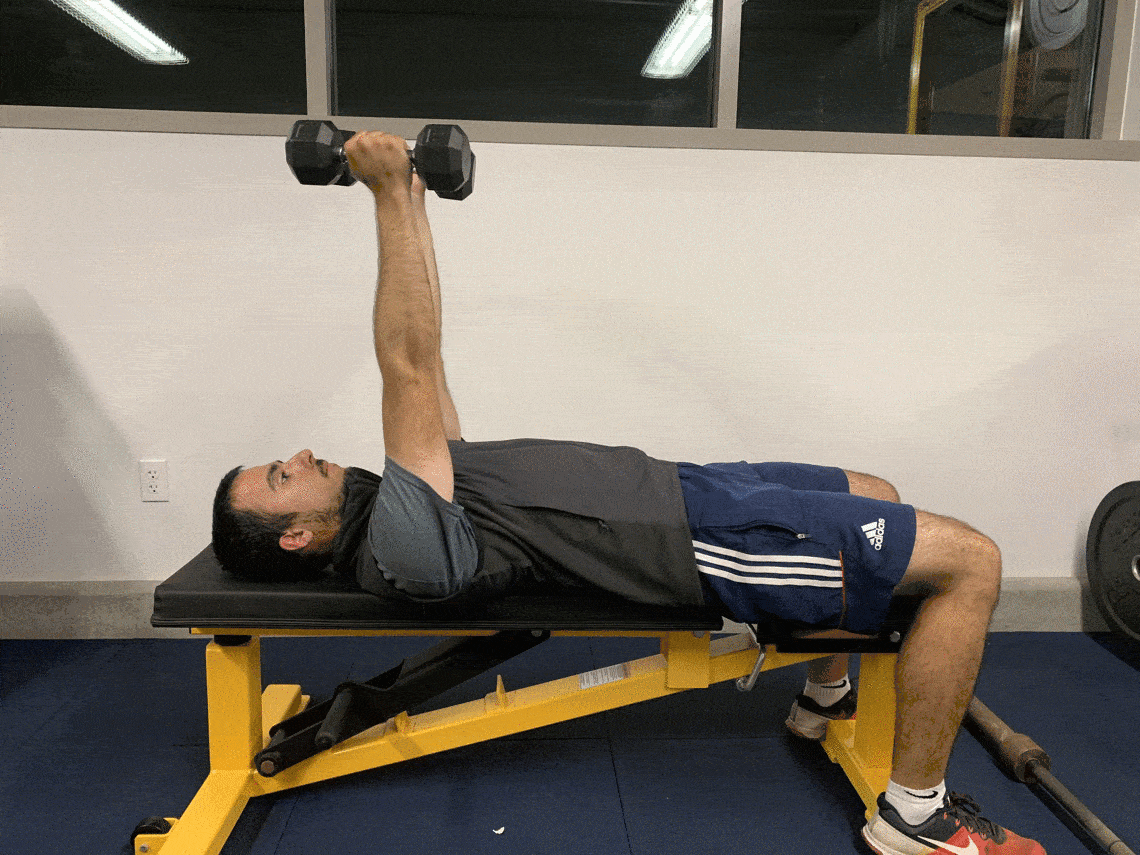
- Lie on your back on the Bosu dome-side up, with shoulders supported and feet on the floor.
- Hold dumbbells above your chest, arms straight.
- Bend your elbows, lowering the weights toward your forehead.
- Extend your arms back up without locking your elbows.
Why it works: Skull crushers are classic tricep builders, and performing them on a Bosu forces your core to stabilize.
Myth buster: Many believe instability exercises are only for abs — but research shows they can significantly improve upper body strength and coordination, too.
Final Thoughts
These 7 Bosu ball tricep exercises aren’t just about sculpting stronger, more defined arms — they’re about enhancing your entire body’s stability, coordination, and strength.
Adding the Bosu to your tricep routine forces every muscle to work harder, helping you break through plateaus and build a body that’s as functional as it is powerful.
Ready to challenge your arms and core like never before? Grab your Bosu ball and start these tricep scorchers today!
Frequently Asked Questions (FAQs)
Are Bosu ball tricep exercises safe for beginners?
Yes! Most Bosu tricep moves can be scaled for beginners by reducing range of motion, performing them on knees instead of toes (for push-up variations), or using lighter weights. Always start slowly to master balance before adding intensity.
Can I do these Bosu tricep exercises every day?
It’s best to give your triceps at least 48 hours of rest between intense workouts to allow muscles to recover and grow. Aim for 2–3 times per week, alternating with other upper-body or lower-body sessions.
What’s the main benefit of using a Bosu ball for tricep exercises?
The Bosu adds instability, forcing your core, shoulders, and supporting muscles to engage more than when using a stable surface. This not only increases tricep activation but also improves balance, coordination, and functional strength.
How do I choose the right weight for exercises like Bosu skull crushers or kickbacks?
Select a weight you can control with good form for 8–12 reps. If you can’t keep your balance or your elbows flare out excessively, reduce the weight until you can maintain stable, controlled movement.
Can these exercises replace standard tricep workouts?
They’re a great addition but shouldn’t fully replace traditional stable exercises, especially if your goal is to maximize strength. Combining both stable and unstable movements gives you the best of muscle building, coordination, and joint stability.
Is the Bosu ball better than a stability ball for tricep training?
For most tricep exercises, the Bosu provides a better platform for hand placement and a unique challenge due to its flat base. Stability balls excel more in core-specific movements but can also complement tricep work.
What other muscle groups do Bosu tricep exercises engage?
In addition to triceps, these moves activate your chest, shoulders, abs, lower back, and even glutes, depending on the exercise. That’s why they’re excellent for developing overall functional fitness.
Can I use a Bosu ball if I have wrist issues?
If you have wrist pain or injuries, be cautious with push-up or dip variations on the Bosu. Consider using push-up bars or modify exercises to keep wrists neutral, or focus on overhead tricep extensions and skull crushers instead.
